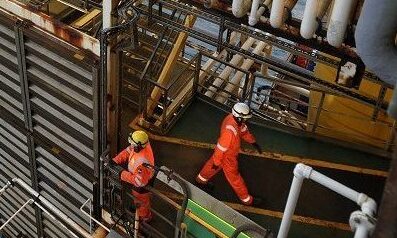Assaults were the most common recorded criminal offence occurring on North Sea platforms over the past five years, according to police data.
Crime figures obtained from Police Scotland via a freedom of information (FOI) request show there have been two cases of common assault offshore and one recorded case of theft on platforms since 2018/19.
The data shows an average less than one incident per year, with no offences having been reported during 2019/20 and 2020/21.
Previous figures
That compares with offshore crime stats reporting nine between 2013/14 and 2017/18, of which voyeurism and theft comprised the largest amount.
Previous statistics also recorded one firearms incident offence, in which a 50 year-old man was charged when a modified shotgun was used to relight a flare on Total’s Elgin platform on Boxing Day 2017. However, no criminal proceedings were brought.
The data would appear to align with the overall reduction in offshore personnel numbers as a result of COVID-19 lockdowns and a slide in activity between late 2019 and 2021.
Crime down along with falling worker numbers offshore
Figures from Offshore Energies UK (OEUK) showed an immediate drop in the number of offshore personnel on board (POB) during pandemic, which fell from around 11,000 to 7,000 workers in less than a month during March-April 2020.
Numbers later recovered above 10,000 by the same time the following year, though in many cases social distancing measures remained in place well into 2022.
Meanwhile, drilling activity too was suppressed, with a record low of five wells drilled in 2020 – a drop on the previous worst year for activity in 2018, when six wells were drilled.
Reflecting on the statistics Steve Rae, executive director of industry member group Step Change in Safety, said: “Any improvement in reported incident rates should be seen as positive, as personal security and wellbeing does have the potential to influence the underlying safety culture on board the assets.”


Conversation